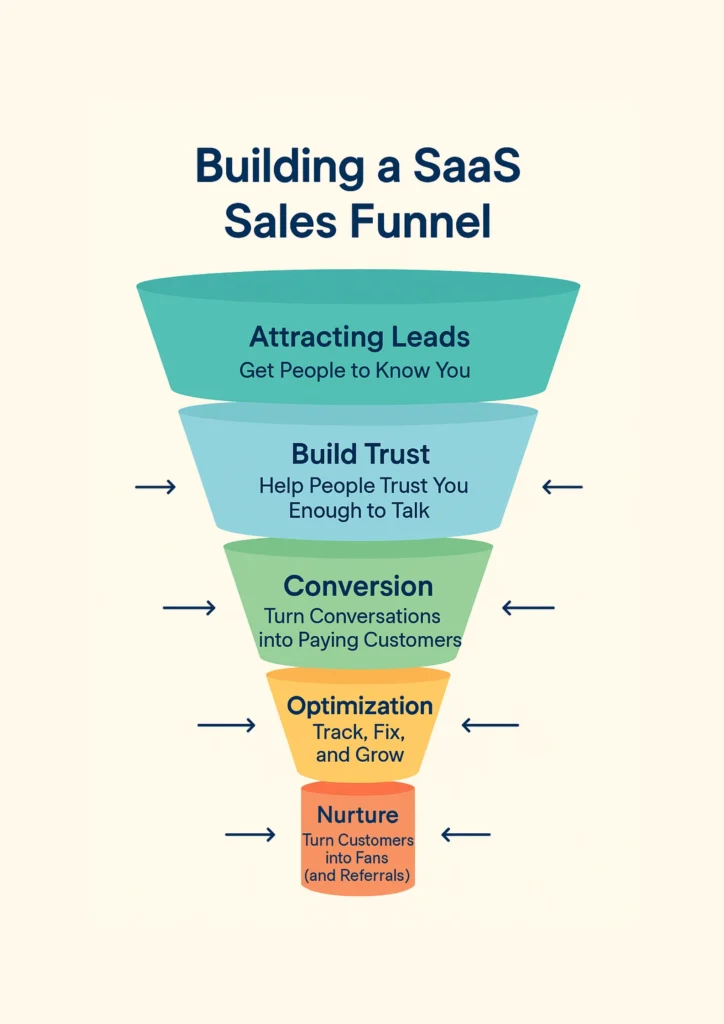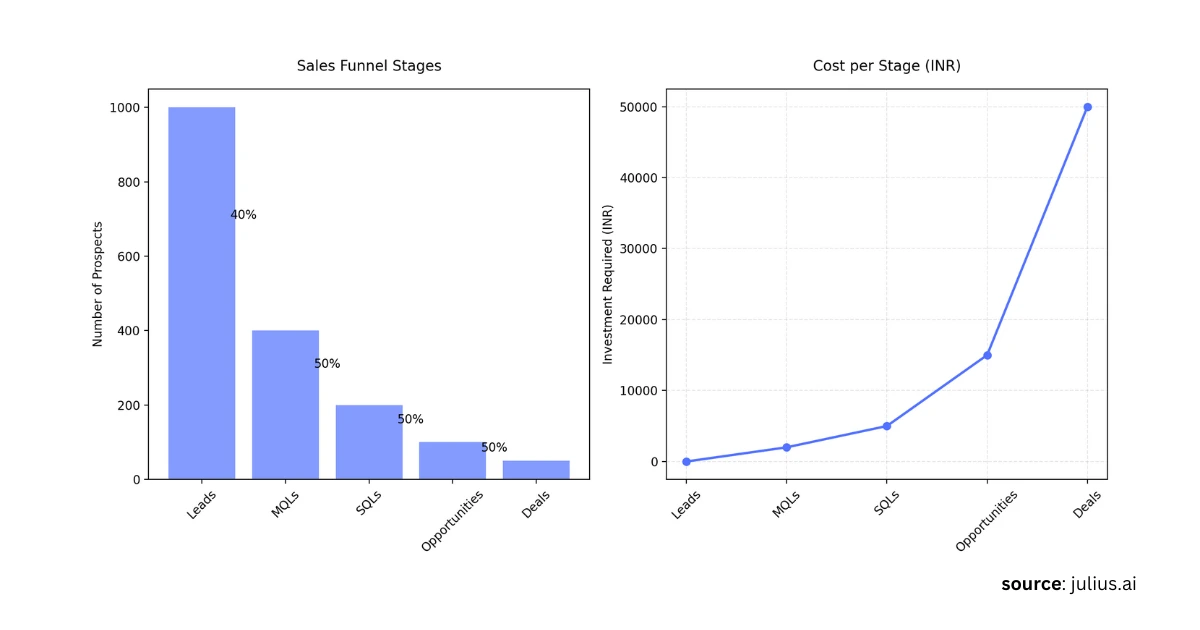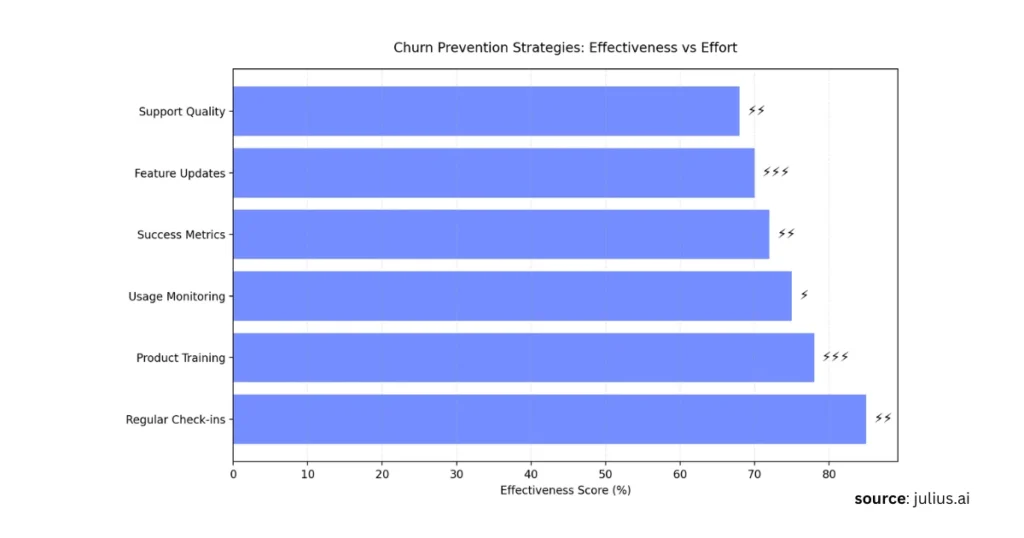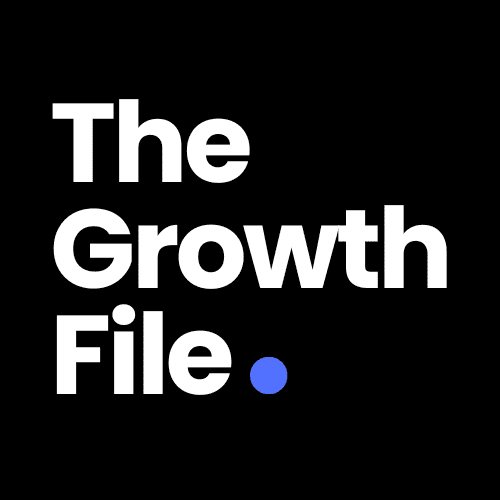SaaS Sales Funnel Explained for Indian SaaS Startups

You’ve got a solid SaaS product. You’ve debugged, tested it, and perhaps even gotten a few early users onboarded.
But growth? That’s where things get uncertain.
Because the big question now is: how do you scale from a few lucky wins to a consistent flow of paying customers?
That’s where Indian SaaS startups usually get stuck. They do some ads, post on LinkedIn, and fire off a few cold emails, but it all seems random.
What you require is a sales funnel, not a buzzword, just a straightforward, step-by-step journey that takes a person from “Who are you?” to “Where do I pay?”
Here, I will distill the step-by-step on how to create a high-performing SaaS sales funnel for Indian founders and buyers.
You’ll learn:
- How to segment your target customer (and stop wasting time)
- How to drive leads that convert
- How to establish trust prior to pitching
- What metrics to monitor so you don’t fly blind
- And how to get customers to promote
Let’s dive in.
What is a SaaS Sales Funnel?
It’s the easy, transparent process that converts a stranger into your paying customer, step by step. 
First, people need to know you exist. Then, they have to want to trust you. And then they need a little push to buy. That’s it. Three easy steps: Know. Trust. Buy.
The funnel section? It simply implies that not everybody who hears of you will be a customer, and that’s okay.
You begin with a lot of people at the top, and sift down to the serious buyers at the bottom.
In the Indian SaaS industry, where choices are exploding, you can’t count on hope alone.
If you don’t take individuals through the correct steps, awareness, interest, and decision, you’ll lose them to a competitor who does.
Finding Your Tribe
Here’s the hard truth: if you’re trying to sell to everyone, you’ll sell to no one.
Before you create a blog post, post ads, or schedule meetings, you need to have a clear idea of whom you’re talking to. That’s your Ideal Customer Profile (ICP). Consider it the “face” of your ideal customer.
But in India, it’s slightly more complicated. The diversity is enormous – various industries, company sizes, purchasing behaviors, and even languages.
So, how do you discover your tribe? Begin with two questions:
What precise problem does my product address?
Who hurts from that pain the worst, enough to pay for a fix?
Dig deeper than superficial facts such as age or job function. Discover where they socialize (LinkedIn? WhatsApp groups? Industry conferences?), what issues lie awake at night, and what they really care about when purchasing technology.
Having this clarity from the beginning saves you months of frustration down the line. Your messaging, ads, demos, and all get crisper.
You’ll get the right people and weed out the ones who were never going to buy in the first place.
Attracting Leads
Now that you know who you’re after, your next step is easy: get their attention.
This is the beginning of your SaaS sales funnel, where prospective customers first learn about you.
And here’s the catch: if they don’t know you exist, they can’t buy from you.
So, how do you cut through India’s noisy, high-growth startup ecosystem?
Referrals
In India, word-of-mouth still dominates. So if a friend recommends your product, they’ll listen.
Begin with your existing users, manually to start with. Later, create a formal referral program with incentives.
Content is king, but context is queen
Be where your potential customers hang out.
For SaaS, this is usually LinkedIn, specialized groups, or startup communities.
Write useful insights, blogs, videos, cheat sheets, or templates that address genuine issues.
Do not write on the world stage. Write about your Indian buyer’s world.
Inbound marketing is most effective when you deliver value first, before asking for something.
Give away free tools, lead magnets (such as calculators or guides), or how-to videos to create awareness and credibility.
Outbound
Cold emails do work if you do them correctly. Don’t send mass pitches. Lead with value.
Connect them to content or invite them to a webinar. Then retarget them with ads to bring them back.
And yes, your site does matter. It should simply say who you assist and how. No jargon, no fluff. Include CTAs such as “Book a Demo” or “Start Free Trial.”
The objective here isn’t to sell yet. Just get noticed by the right people.
Because if your top-of-funnel isn’t working, it doesn’t matter how good your product is. Nobody’s seeing it.
Build Trust
And this is the middle of your SaaS sales funnel, and quite possibly the most crucial (and usually the most neglected) phase.
Here, your objective isn’t to seal the deal. It’s to demonstrate that you know their issues and that you’re the one who can fix them.
This is how you build that trust:
Educate before you pitch.
Host webinars, write comparison blog posts, or provide guides that make your potential customers think smarter, without necessarily buying. Demonstrate you know their world better than your competition.
Show, don’t tell.
No one trusts grand promises anymore. Provide them with interactive demos, product tours, or even brief walkthrough videos specific to their issues. If you can customize the experience through tools like Walnut or Storylane, even better.
Leverage social proof
Testimonials are good. Indian case studies are better. Provide actual examples from Indian startups or SMBs who have used your product and achieved results. Use numbers, names, and context. That establishes real credibility.
Engage with them
A 15-minute phone call or video conversation can make a big difference. It allows you to listen, comprehend their requirements, and assist without forcing a sale. In India, most purchasing decisions are still made on the basis of the human touch.
And lastly, your messaging is the quiet deal-breaker.
If what you have to say doesn’t resonate, none of your efforts will take hold.
Your homepage, emails, and content all require a clear answer to: What problem do we solve? And why should they trust us?
Conversion

This is where it all comes together. You’ve brought in the right people and they trust you.
Now, it’s time to close the deal, convert that interest into a paying customer.
But here’s a tough truth: even if someone likes your product, they may still not buy.
Why? Because the journey to conversion isn’t always clear or simple.
Make the next step ridiculously easy.
Your pricing page must be transparent. No guessing. If you’re selling to Indian SMBs, display price levels that reflect their budget realities.
If you cater to enterprise customers, provide a “Talk to Sales” option with a clear description of what they’ll receive.
Your CTAs (Call-to-Actions) are more important than you know.
Make them bold, action-oriented language such as “Start Free Trial,” “Book Your Demo,” or “Get Started Today.” Not some vague buttons like “Learn More.”
Anticipate objections.
Be proactive. Provide an FAQ page, give frank comparisons with competing tools, and provide clear policies.
If pricing can be negotiated for large sales, mention so. A lot of Indian customers anticipate flexibility for a negotiation.
Customize the finish line.
Provide final, custom demos based on what you heard from the buyer previously.
Highlight how your solution addresses their challenges. Extra points if you have success stories of companies similar to theirs.
Incorporate onboarding as part of the conversion.
Your funnel doesn’t terminate at the “Pay Now” button. Cluttered onboarding can dash enthusiasm in a hurry.
Create welcome emails, step-by-step walkthroughs, and support touchpoints.
Optimization

Building a SaaS sales funnel isn’t a “set it and forget it” task.
It’s like running a stage show, you’ve got to keep tuning the performance based on the audience’s response.
This is where most founders fall short. They build the funnel… but never look back at how it’s working.
Start by measuring the right things:
- Conversion rates between stages (not just total leads).
- Conversion time
- Customer Acquisition Cost (CAC).
- Customer Lifetime Value (CLTV).
- Churn Rate (number of users who fall off after purchase).
These aren’t vanity metrics. They let you know exactly where your funnel is leaking.
Next, find the bottlenecks.
Are individuals not signing up even after they visit your site? Perhaps your message isn’t clear enough.
Getting an enormous number of signups but nobody’s buying? Your onboarding or sales pitch may require tuning.
Viewing a lot of churn? Perhaps your product requires more support or simpler setup.
Then, fix one piece at a time.
You don’t require a complete funnel revamp every month. Simply choose the weakest step and test. Test a new lead magnet, enhance demo quality, or conduct a CTA A/B test.
Lastly, continue to speak with your customers.
Ask why they subscribed. Ask why they didn’t. Utilize tools such as Hotjar or Google Analytics to observe how they act on your site. This is the move that distinguishes a successful SaaS startup from a stagnant one.
Nurture
Here’s why this step is important: happy customers don’t just renew, they refer. And referred customers tend to convert more quickly, longer, and more confidently. That’s gold.
Make support seamless.
Don’t make your customers feel like they’re running after you.
Create simple access to help, live chat, in-app tutorials, a quick-support email.
For Indian users, WhatsApp or local language support can be a game-changer.
Continue delivering small wins.
Send useful prods, advice, and notifications based on what they’re really doing with your tool.
Not using a feature yet? Highlight why it’s important. Having trouble setting up? Give assistance before they have to ask.
Acknowledge milestones.
It may be their 100th login or finishing an entire workflow. Send them a personalized note.
Grant a little reward. Even a mention in a customer spotlight comes a long way.
Request feedback
Make it simple for users to report what’s going well, and what’s not.
But more importantly, demonstrate that you’re listening. “We built this because you asked” is one of the strongest trust-builders in SaaS.
Encourage advocacy, don’t beg for it.
Smiling customers enjoy speaking about you. Offer them referral incentives, or make them co-create content with you, such as case studies, webinars, or social updates.
Make them insiders, not just customers.
Final Words
If you’ve read this far, hopefully one thing is apparent: a SaaS sales funnel is not some magic recipe. It’s a breathing, living thing that you cultivate step by step.
If you’re creating a SaaS product in India or selling to Indian consumers, your funnel must be real, authentic, and trusted.
No hype. No artificial scarcity. Just real, useful interactions each step of the way.
Because ultimately, individuals don’t purchase software.
They purchase solutions from someone whom they trust.
Disclaimer: The information contained in this blog, The Growth File, is intended for general informational purposes only and does not constitute professional advice. Always consult with a qualified professional before making any business decisions based on the information you find on this blog.
What’s New?
-
The Future of Direct Sale is Not Just About Selling
Sales -
What’s the Difference Between Online and Offline Marketing?
Marketing -
17 Agri Business Ideas That Turn Effort into Income
Business Ideas -
19 Photography Business Ideas for Every Budget
Business Ideas -
Difference Between Personal Selling and Sales Promotion
Sales
